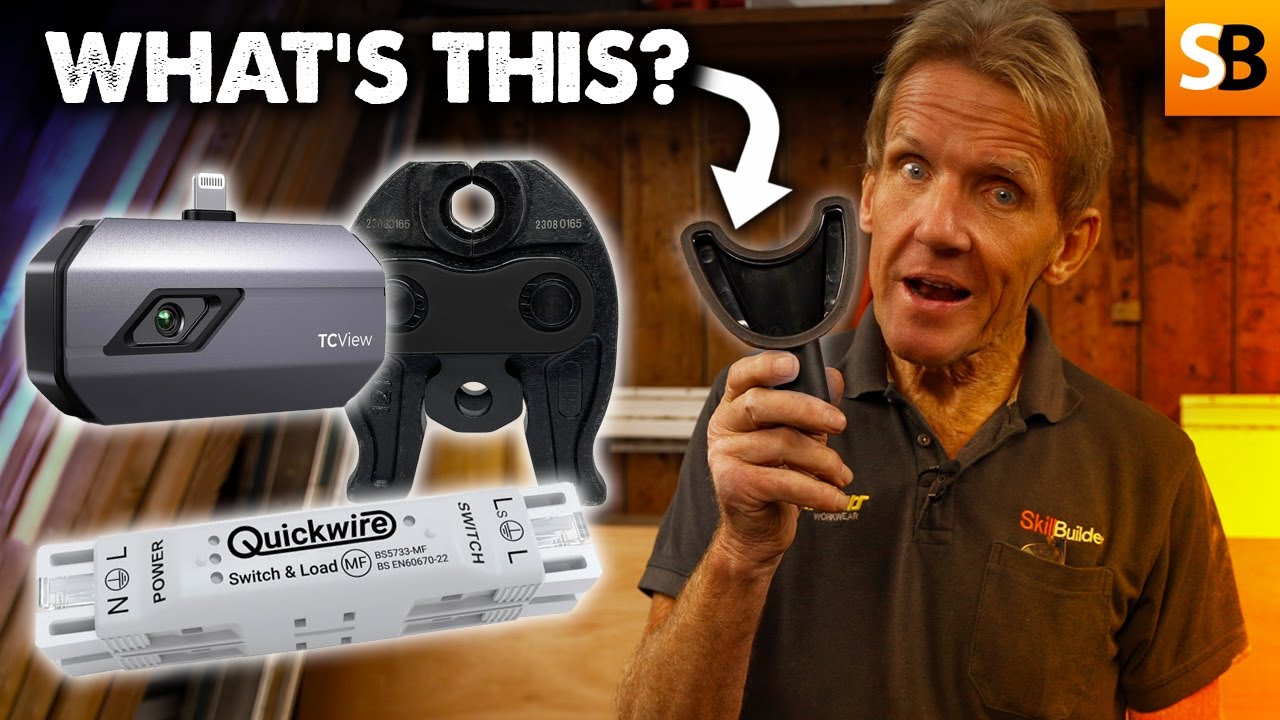Newsletter ▶ https://skill-builder.uk/signup ◀
McAlpine BWSTSS-TOP Kitchen Sink Stainless Steel Strainer Plug
? https://amzn.to/46oMc7w
Roger shows you how to replace the basket strainer in your kitchen sink waste.
Kitchen Sink Basket Replacement
The kitchen sink basket, often referred to as the sink strainer or drain assembly, plays a crucial role in your kitchen plumbing. It catches food debris while allowing water to drain away, preventing clogs and ensuring smooth operation. Over time, these baskets can wear out, corrode, or become inefficient, necessitating a replacement. Replacing a kitchen sink basket is a relatively straightforward task that can be tackled with some basic tools and a little know-how. Here’s a step-by-step guide to help you through the process.
Why Replace a Kitchen Sink Basket?
There are several reasons you might need to replace your kitchen sink basket:
- Leaks: Over time, the seal around the sink basket can deteriorate, leading to leaks.
- Corrosion: Continuous exposure to water can cause the metal to corrode.
- Clogs: Persistent clogs and slow drainage might indicate that the basket is damaged or clogged beyond repair.
- Upgrades: You might want to upgrade to a more efficient or aesthetically pleasing model.
Tools and Materials You’ll Need
Before starting, gather the following tools and materials:
- Adjustable wrench
- Plumber’s putty
- Screwdriver
- Pliers
- Bucket or towel
- New sink basket assembly
Step-by-Step Replacement Guide
1. Prepare the Work Area
Clear the space under the sink to give yourself room to work. Place a bucket or towel underneath the sink to catch any water that might spill when you remove the old basket.
2. Remove the Old Sink Basket
- Disconnect the Drain Pipe: Use an adjustable wrench to loosen the slip nut that connects the drain pipe to the sink basket. Once loose, pull the pipe away from the basket.
- Loosen the Lock Nut: Underneath the sink, you’ll find a large lock nut securing the basket to the sink. Use pliers or an adjustable wrench to loosen and remove this nut. You might need to hold the basket from above to prevent it from spinning.
- Remove the Basket: Once the lock nut is removed, push the old basket up and out from the sink. If it’s stuck, gently tap it with the handle of a screwdriver to loosen it.
3. Clean the Area
Before installing the new basket, clean the area around the sink drain opening. Remove any old plumber’s putty or debris to ensure a smooth and clean surface for the new basket.
4. Apply Plumber’s Putty
Roll a small amount of plumber’s putty into a rope-like shape and apply it around the underside of the new sink basket’s flange. This putty creates a watertight seal between the basket and the sink.
5. Install the New Sink Basket
- Position the Basket: Insert the new basket into the sink drain opening, pressing it down firmly to spread the putty and create a seal.
- Secure the Basket: From underneath the sink, slide the rubber gasket, friction ring, and lock nut onto the basket’s threaded tailpiece. Tighten the lock nut by hand until snug, then use pliers or an adjustable wrench to give it an extra quarter turn. Be careful not to overtighten, as this can damage the components or the sink.
- Clean Excess Putty: Wipe away any excess plumber’s putty that squeezes out from around the flange on the sink surface.
6. Reconnect the Drain Pipe
Reconnect the drain pipe to the new sink basket’s tailpiece and tighten the slip nut using your adjustable wrench. Ensure it’s snug but not overtightened, to avoid stripping the threads.
Test for Leaks
Once everything is reconnected, run water into the sink to test for leaks. If you notice any dripping, gently tighten the connections as needed. Ensure that the basket is securely in place and that all connections are dry.
Maintenance Tips
- Regular Cleaning: Periodically clean the sink basket to prevent buildup of debris and ensure efficient drainage.
- Inspect Seals: Occasionally check the seal around the sink basket for signs of wear or leaks.
- Avoid Harsh Chemicals: Use gentle cleaning agents to prolong the life of your sink basket and prevent corrosion.
Conclusion
Replacing a kitchen sink basket is a practical and cost-effective way to maintain your kitchen’s plumbing system. By following these steps and using the right tools and materials, you can easily replace a worn-out or leaking sink basket, ensuring a leak-free and efficient kitchen sink. Regular maintenance and timely replacements will keep your kitchen running smoothly and prevent potential water damage.























